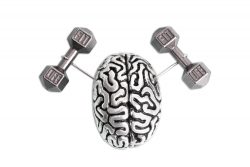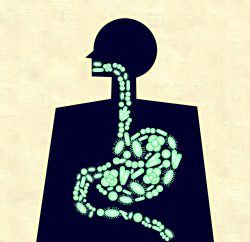New Study Shows Hydration Improves Longevity
 Research has revealed a potential link between water consumption and long-term health benefits. Staying hydrated could positively impact your overall well being. It has the potential to slow down the aging process by mitigating decreases in body water content which can result in higher levels of serum sodium.
Research has revealed a potential link between water consumption and long-term health benefits. Staying hydrated could positively impact your overall well being. It has the potential to slow down the aging process by mitigating decreases in body water content which can result in higher levels of serum sodium.
According to a study recently featured in The Lancet journal eBioMedicine, staying hydrated could play an important role in promoting longevity and overall well-being. Drinking plenty of water optimizes metabolism and cell function while reducing risk for chronic illnesses associated with premature aging.
The research reveals that drinking adequate amounts of water can have lasting health benefits. The researchers used the long-term Atherosclerosis Risk in Communities (ARIC) study which followed nearly 16,000 individuals between 45-66 years old for 25 years. It assessed their serum sodium levels as a proxy for hydration status. It was determined those with higher normal serum sodium had poorer outcomes than those who remained better hydrated over time. Results showed even small differences from lower end to upper limits of 135-146 mEq/L could lead to significant detriments on overall well-being by age 76.
Elevated sodium levels in the bloodstream can be associated with serious health issues, such as stroke and dementia. Adults whose serum sodium level was between 142-146 mEq/L demonstrated a higher risk of chronic diseases than those who had lower values (137-142). Surprisingly, an even greater increased risk for death occurred if their sodium went up to 144.5–146mEq/L. Keeping your serum levels at 138 40 mEq/L may help reduce one’s chances of developing these conditions significantly. The authors suggest looking beyond just sodium intake and consider other important contributing factors such as hormones, inflammation levels and cytokines when exploring how these elements affect the aging process.
Research has found that roughly half of the world’s population does not consume enough water or liquids to sustain a healthy lifestyle, with minimum recommendations starting at 1.5 liters per day. The National Institutes of Health recommends adult women aim to drink about 2-2.5 liters and men 3 liters each day, with 80% coming from drinks like water or tea. Pay attention to how you feel and adjust this amount accordingly so that you can maintain a healthy balance.
Maintaining water balance is a crucial part of keeping our bodies functioning properly. The amount we need to drink daily depends on factors like health conditions and medications. Drinking too little can lead to unpleasant symptoms such as fatigue, soreness and confusion due to electrolyte deficiencies. It’s important to remember that food also has significant water content which helps contribute towards necessary intake.
Although there is no conclusive evidence to suggest that drinking water directly protects against different diseases, research has shown an association between proper hydration and overall health. Staying well-hydrated may have long term benefits for our bodies!
To view the original scientific study click below:
Middle-age high normal serum sodium as a risk factor for accelerated biological aging, chronic diseases, and premature mortality



 Tired of sitting hunched over your desk all day? Taking a five-minute stroll each half hour could be the secret to better health and improved mood, according to new research from Columbia University. Studies confirm that this simple movement can reduce blood sugar levels and spikes by up to 60%, while lowering your blood pressure and boosting your mood.
Tired of sitting hunched over your desk all day? Taking a five-minute stroll each half hour could be the secret to better health and improved mood, according to new research from Columbia University. Studies confirm that this simple movement can reduce blood sugar levels and spikes by up to 60%, while lowering your blood pressure and boosting your mood.  A recent study has revealed a promising connection between Vitamin D levels in the human brain and lower rates of dementia. It suggests that higher amounts may be associated with decreased risk as people age, but further investigation is needed to fully comprehend how this crucial vitamin can influence cognition. While some possible causes for Alzheimer’s Disease are known, much more research into its origin remains an important area of inquiry.
A recent study has revealed a promising connection between Vitamin D levels in the human brain and lower rates of dementia. It suggests that higher amounts may be associated with decreased risk as people age, but further investigation is needed to fully comprehend how this crucial vitamin can influence cognition. While some possible causes for Alzheimer’s Disease are known, much more research into its origin remains an important area of inquiry. If you’re having trouble sleeping, now may be the time to take action. A recent Canadian study suggests a correlation between insomnia and an increased chance of developing memory decline or dementia as we age. Postdoc Nathan Cross details these findings in his longitudinal research which also highlights psychological disorders as potential comorbidities for diminished mental health.
If you’re having trouble sleeping, now may be the time to take action. A recent Canadian study suggests a correlation between insomnia and an increased chance of developing memory decline or dementia as we age. Postdoc Nathan Cross details these findings in his longitudinal research which also highlights psychological disorders as potential comorbidities for diminished mental health. Paving the way for potential dietary treatments, researchers have revealed a promising link between our genes and what we eat. Exploring this connection could aid in treating serious conditions like diabetes, heart disease, and cancer. Recent research has sparked new insights into the potential benefits of intermittent fasting. According to a study published in Cell Metabolism, when mice only ate during certain periods of time, there were profound changes in gene expression impacting almost 80% of all genes. This can lead to improved blood sugar regulation and decreased risk for obesity as well as reversing signs typically associated with aging.
Paving the way for potential dietary treatments, researchers have revealed a promising link between our genes and what we eat. Exploring this connection could aid in treating serious conditions like diabetes, heart disease, and cancer. Recent research has sparked new insights into the potential benefits of intermittent fasting. According to a study published in Cell Metabolism, when mice only ate during certain periods of time, there were profound changes in gene expression impacting almost 80% of all genes. This can lead to improved blood sugar regulation and decreased risk for obesity as well as reversing signs typically associated with aging. Researchers at Iowa State have uncovered a groundbreaking discovery that the more body fat and less muscle mass we accumulate as we age, the lower our mental agility may become. An aging adult’s physical health can directly impact their cognitive abilities. This exciting development offers new hope for treatments that could help preserve an agile mind in older people who live a sedentary lifestyle or are obese due to natural changes with age.
Researchers at Iowa State have uncovered a groundbreaking discovery that the more body fat and less muscle mass we accumulate as we age, the lower our mental agility may become. An aging adult’s physical health can directly impact their cognitive abilities. This exciting development offers new hope for treatments that could help preserve an agile mind in older people who live a sedentary lifestyle or are obese due to natural changes with age. Some of us put on weight far more easily than others, and this may be related to our unique gut microbial compositions. Understanding how these microscopic organisms impact our health could help provide an explanation why some people seem unaffected by indulgent eating habits. A team at the Copenhagen University has uncovered a connection between weight gain and gut microbe composition. It appears some individuals may have an advantage in getting greater energy from food than those with less efficient microbes. This breakthrough research could explain why people sometimes struggle to achieve similar results despite eating identical meals.
Some of us put on weight far more easily than others, and this may be related to our unique gut microbial compositions. Understanding how these microscopic organisms impact our health could help provide an explanation why some people seem unaffected by indulgent eating habits. A team at the Copenhagen University has uncovered a connection between weight gain and gut microbe composition. It appears some individuals may have an advantage in getting greater energy from food than those with less efficient microbes. This breakthrough research could explain why people sometimes struggle to achieve similar results despite eating identical meals. Midnight meals might be a bad idea for your health. A recent study provided experimental evidence that eating late decreases expenditure of energy, increased hunger and changes in fat tissue that combined might increase obesity risk.
Midnight meals might be a bad idea for your health. A recent study provided experimental evidence that eating late decreases expenditure of energy, increased hunger and changes in fat tissue that combined might increase obesity risk.  As with any sugar, when consumed in excessive amounts, fructose can be harmful. According to research done by USDA scientists back in 2008, Americans consume about 50 pounds worth every year. When eaten in such large quantities it can cause problems such as weight gain, insulin resistance, type 2 diabetes, and a host of other health problems.
As with any sugar, when consumed in excessive amounts, fructose can be harmful. According to research done by USDA scientists back in 2008, Americans consume about 50 pounds worth every year. When eaten in such large quantities it can cause problems such as weight gain, insulin resistance, type 2 diabetes, and a host of other health problems.  With over 350 million people worldwide suffering from progressive degeneration of cartilage and injuries, it’s no surprise that meaningful relief has been arduously sought after. Thankfully, new hope has arisen in the form of recent research conducted by faculty at The Forsyth Institute with the potential to revolutionize treatments for current and future cases alike. By leveraging dynamic cell reprogramming techniques within regenerative medicine practices, this study offers an encouraging approach to generating functionally-sound cartilage cells. This has the potential of bringing us closer than ever before to resolving these debilitating conditions.
With over 350 million people worldwide suffering from progressive degeneration of cartilage and injuries, it’s no surprise that meaningful relief has been arduously sought after. Thankfully, new hope has arisen in the form of recent research conducted by faculty at The Forsyth Institute with the potential to revolutionize treatments for current and future cases alike. By leveraging dynamic cell reprogramming techniques within regenerative medicine practices, this study offers an encouraging approach to generating functionally-sound cartilage cells. This has the potential of bringing us closer than ever before to resolving these debilitating conditions.